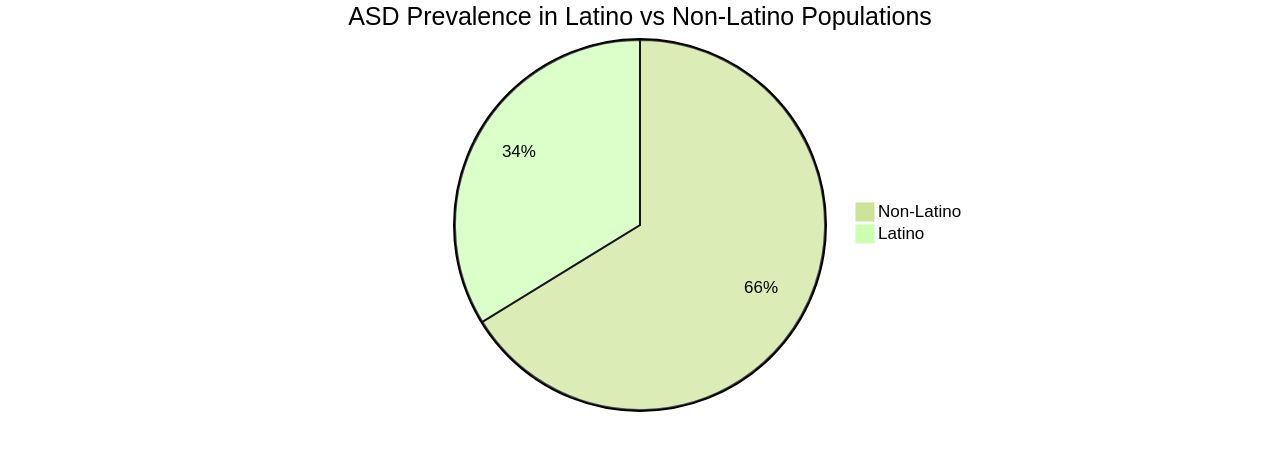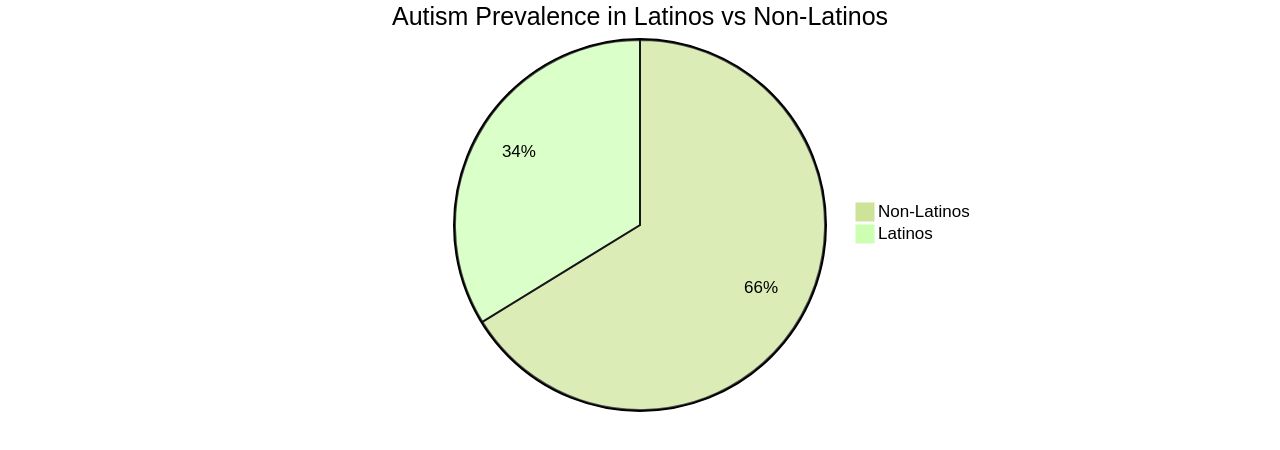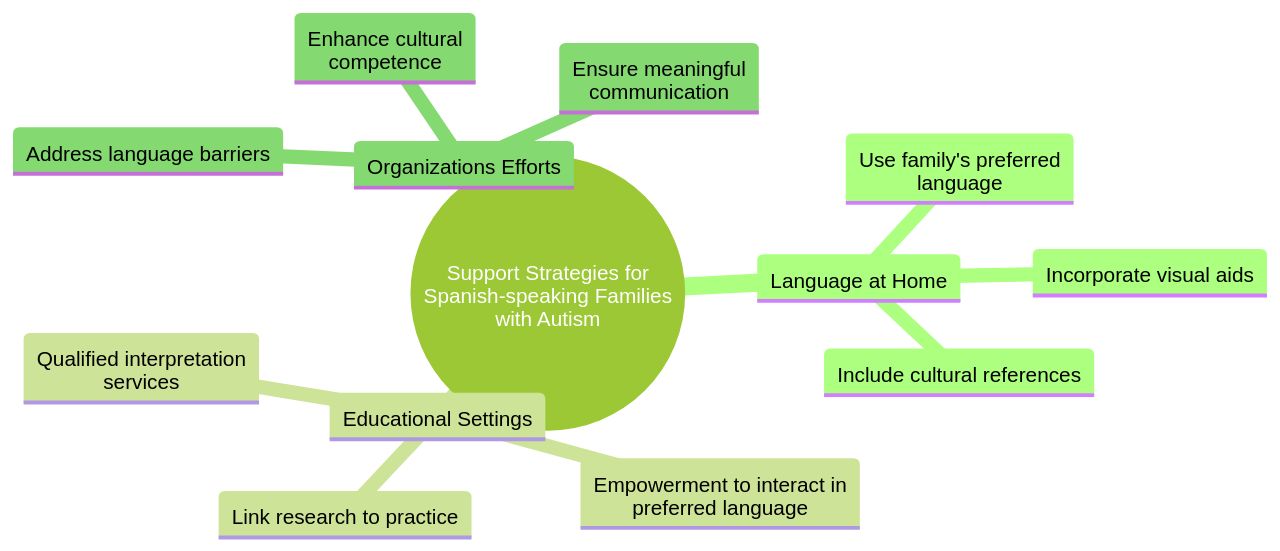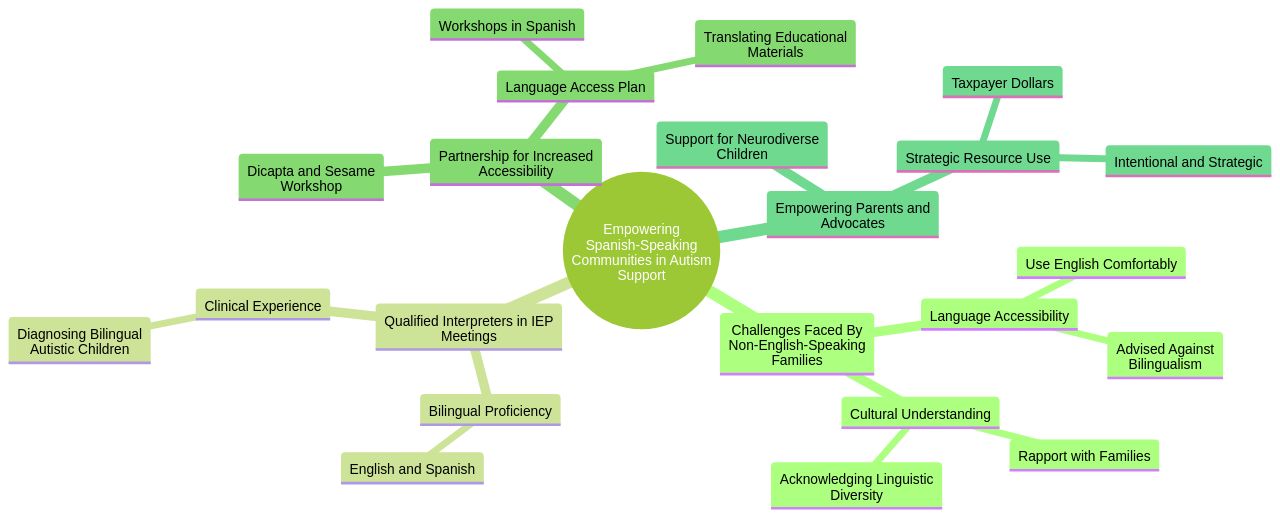Introduction
Autism Spectrum Disorder (ASD) presents unique challenges within Spanish-speaking communities, where cultural nuances play a significant role in shaping the experience and support for individuals with autism. In this article, we will explore the intersection of culture, language, and access to resources in understanding and supporting autism in Spanish-speaking communities.
From the importance of culturally sensitive support to the role of language and communication, we will delve into the challenges faced by these communities and the initiatives being taken to bridge the gaps. Join us as we explore the ways in which collaboration and advocacy can empower parents and caregivers to ensure the well-being and thriving of their children with autism.
Understanding Autism in Spanish-Speaking Communities
Autism Spectrum Disorder (ASD) presents unique challenges within Spanish-speaking communities, where cultural nuances play a significant role in shaping the experience and support for individuals with autism. Despite the global presence of autism, with a lower reported prevalence of 26 per 10,000 in Latino populations compared to 51 per 10,000 in non-Latinos, the manifestation and recognition of autism's core characteristics—such as social communication difficulties and repetitive behaviors—can differ greatly due to cultural perceptions.
For instance, behaviors like limited eye contact may be seen as typical within certain cultures, potentially delaying autism recognition and diagnosis. Professionals with diverse backgrounds, like those who have worked as ABA therapists, special education teachers, and advocates for bilingual families, understand that a one-size-fits-all approach does not apply.
Their insights reveal that bilingual families often feel disempowered when encouraged to forgo their native language, despite evidence suggesting the benefits of maintaining bilingualism. The importance of culturally sensitive support is underscored by disparities in access to care and services, particularly for Latino and low-income families who report more severe autism symptoms and face barriers in obtaining timely diagnoses and interventions. This is exemplified by organizations like The Parents’ Place of Maryland, which has recognized the need for strategic resource allocation and language access plans to serve diverse families effectively. Such initiatives are crucial in bridging the gap for underserved and marginalized communities, ensuring that every child with autism receives the necessary support to thrive.

Cultural Considerations for Supporting Autism in Spanish-Speaking Communities
Autism, a neurodevelopmental disorder, presents unique challenges for Spanish-speaking communities, where cultural beliefs and practices shape perceptions and approaches to seeking support. Research highlights that Latino families often experience disparities in access to autism diagnosis and services, with a lower prevalence of autism reported among Latinos (26/10,000) compared to non-Latinos (51/10,000).
Furthermore, Latino and economically disadvantaged families are more likely to rate their children's autism as more severe. These findings underscore the need for culturally informed intervention and support systems.
Experts with lived experience in these communities, such as Dr. Dueñas, emphasize the importance of community-engaged research to address the specific needs of Latino families. This includes understanding the role of bilingualism and biculturalism in shaping the autistic experience.
Special education veteran Kristin Vogel-Campbell notes that language barriers can hinder parents' ability to navigate the special education system and advocate effectively for their children. This is compounded by the scarcity of legal and advocacy resources available to non-English speaking families. Organizations like The Parents' Place of Maryland are responding to these challenges by updating language access plans and offering Spanish workshops and training sessions. These initiatives are crucial for ensuring meaningful access to programs and services, as mandated by federal regulations. As we move forward, it is imperative to create autism-competent environments, utilize patient navigators, and embrace telehealth solutions to improve the health care experience for autistic individuals and their caregivers across the lifespan.

Language and Communication Support
Autism spectrum disorder (ASD) presents distinct challenges in language and communication, especially within Spanish-speaking communities where bilingualism is common. The intersection of cultural practices and language offers a rich landscape for supporting language development in autistic individuals.
Experts advocate using the family's preferred language at home to support language acquisition, as the first language is foundational to learning additional languages. This approach aligns with the lived experiences of professionals with a deep understanding of the cultural nuances in bilingual settings.
For instance, clinicians with backgrounds in Applied Behavior Analysis (ABA) therapy, special education, and advocacy emphasize the importance of culturally resonant strategies, such as visual aids and familiar cultural references, to aid communication. Empirical evidence from case studies highlights that some bilingual families feel disempowered when encouraged to communicate only in English with their neurodiverse children, despite not being comfortable with the language.
This underscores the need for qualified interpretation services in educational settings, which can be scarce, leaving a gap in effective communication for IEP meetings. Dr. Dueñas, with her research on Latin transborder caregivers, illustrates the complexities and identity shifts within bicultural communities, emphasizing the need for community-engaged research to inform practice. Organizations like The Parents’ Place of Maryland are taking significant steps by updating their language access plans to better serve diverse families, acknowledging the importance of using resources strategically to support underserved communities. Additionally, modern healthcare companies are now offering bilingual therapy services, recognizing the lower rates of treatment among Hispanic/Latinx adults with mental illness due to language barriers and cultural competence issues. This concerted effort across sectors aims to address the needs of Spanish-speaking families with autistic members, ensuring they receive the support and services necessary for meaningful communication and interaction.

Access to Resources and Services
For Spanish-speaking communities, enhancing the support for individuals with autism is crucial. The stark reality is that disparities exist: Latinos and families with lower income often rate their children's autism as more severe, and these groups have been found to have the lowest preschool autism rates, at 16 per 10,000 children. What's more, they face greater challenges accessing services, a gap that is somewhat lessened for those with Medicaid or State Children's Health Insurance Program.
Therefore, it's imperative to provide resources and services that are not only linguistically accessible but also culturally attuned. Tailoring interventions to fit the unique environmental and logistical realities of these communities, such as those living transborder lives, is key to improving compliance and engagement. Organizations are taking steps to bridge these gaps.
The Parents’ Place of Maryland, for example, has updated its language access plan and is translating materials into Spanish, underscoring the importance of strategic resource allocation. Similarly, Two Chairs is now offering virtual and in-person bilingual therapy services to address both access and affordability issues that are prevalent within Hispanic/Latinx populations. By following these examples and ensuring that all communication—from IEP discussions to health care instructions—is clear, accurate, and in the preferred language, we can start to rebuild trust and provide the support necessary for individuals with autism to thrive in Spanish-speaking communities.
Collaboration and Advocacy
In the heart of Spanish-speaking communities, collaboration and advocacy are essential in addressing the needs of individuals with autism. It's about more than just providing services—it's about understanding and honoring the diverse experiences within these communities.
For instance, a social worker with the California Regional Centers saw firsthand the gaps in behavioral health services for minoritized families, including delayed diagnosis and a lack of culturally relevant services. This insight is a call to action for professionals to build genuine relationships with the Latin community to inform autism intervention research.
Kristin Vogel-Campbell, with two decades in special education, highlights the challenges non-English-speaking families encounter, such as barriers to advocacy due to language differences and the scarcity of legal resources. These challenges underscore the importance of ensuring qualified interpreters are available for discussions like individualized education plan (IEP) meetings, which are crucial for children's educational success.
The partnership between Dicapta and Sesame Workshop exemplifies a successful model for increasing accessibility. By providing engaging, accessible content, these organizations empower children with disabilities in Latinx communities.
Furthermore, research suggests that acknowledging the linguistic diversity within Spanish-speaking populations is vital. Different Spanish dialects across the U.S. require tailored communication strategies. This nuanced approach can bridge the divide in access to timely diagnosis and treatment for children with autism. Statistics reveal the complexity of language dominance within Hispanic populations, emphasizing the need for bilingual proficiency in both English and Spanish to serve these communities effectively. By recognizing these nuances, professionals and advocates can better support families, ensuring they have the agency and resources to navigate the special education system and advocate for their children.

Conclusion
In conclusion, supporting autism in Spanish-speaking communities requires a culturally sensitive approach. Cultural beliefs shape perceptions of autism, leading to delayed recognition and diagnosis.
Disparities in access to care exist, especially for low-income families. Language support is vital, using the family's preferred language aids communication.
Enhancing access to resources is crucial, tailoring interventions to community realities. Collaboration and advocacy are essential for building relationships and increasing accessibility. By embracing cultural sensitivity, collaboration, and advocacy, we can ensure the well-being of individuals with autism in Spanish-speaking communities.




